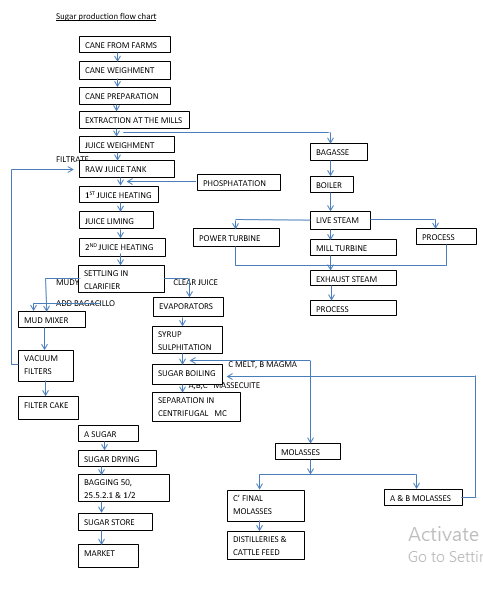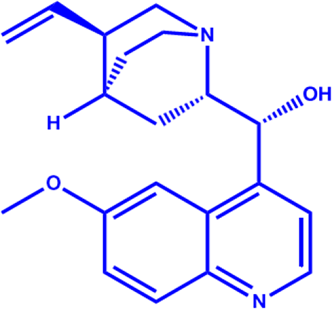What do you know about table sugar? And the common misconception that raw and unrefined sugars are healthier than refined sugar.
Sugar is made by some plants to store energy that they don't need straight away, rather like animals make fat. People like sugar for its sweetness and its energy so some of these plants are grown commercially to extract the sugar.
What we call table sugar, chemist know as 'sucrose', one of
the family of sugars otherwise known as saccharides in the grouping called
carbohydrates. Carbohydrates, as the name implies, contain carbon and hydrogen
plus oxygen in the same ratio as in water. The saccharides is a large family
with the general formula CnH2nOn. The simplest of the sugars is glucose, C6H12O6,
although its physical chemistry is not that simple because it occurs in two
distinct forms which affect some of its properties. Sucrose, C12H22O11,
is a disaccharide, a condensation molecule made up of two glucose molecules.
The process whereby plants make sugars is photosynthesis. The
plant takes in carbon (IV) oxide from the air through pores in its leaves and
absorbs water through its roots. These are combined to make sugar using energy
from the sun and with the help of a substance called chlorophyll. Chlorophyll
is green which allows it to absorb the sun's energy more readily and which, of
course, gives the plants' leaves their green colour. The reaction of
photosynthesis can be written as the following chemical equation when sucrose
is being made:
|
12 CO2 + 11 H2 O |
→ |
C12 H22 O11 + 12 O2 |
|
carbon (IV) oxide +
water |
→ |
sucrose + oxygen |
Sucrose is found in the stems of sugar cane and roots of
sugar beetle. It also occurs alongside glucose and fructose in other plants
particularly in some roots like carrots and other fruits.
Sugar cane is composed of approximately 70% water, 15%
soluble substances and 15% insoluble substances. In the 15% soluble substances
only 12% is sucrose and the rest is fructose and glucose. More than 60% of the world’s sugar production
is from sugar cane; the balance is from sugar beet.
For processing sugar beet (water 75%; sugar 17%), only the
washing, preparation, and extraction processes are different. After washing,
the beet is sliced, and the slices are drawn into a slowly rotating diffuser
where a counter current flow of water is used to remove sugar from the beet
slices. Sugar refining involves removal of impurities and decolorization. The
steps generally followed include affinition (mingling and centrifugation),
melting, clarification, decolorization, evaporation, crystallization, and
finishing. Decolorization methods use granular activated carbon, powdered
activated carbon, ion exchange resins, and other materials.
The flow chart below illustrates sugar production process from sugarcane
The cane received in the factory yard is fed to the carrier
by mechanical unloader from tractors while the cane carriers are manually emptied.
The cane is passed through preparatory devise like knives, for fine cutting
before being subjected to crushing in a milling tandem comprising 4 roller
mills. The mills are of modern design, being equipped by turbine drive, special
feeding devices efficient compound imbibition system.
The raw juice from milling station is weighed while being
treated with phosphoric acid; it’s then heated in primary heater and treated
with lime solution for removal of impurities in suspension. The treated juice
on boiling in the secondary heaters is fed to the clarifier from which the
clear juice is decanted while the settled impurities known as mud are sent to
continuous vacuum filter for filter for removal of unwanted stuff.
The clear juice with about 73- 75% water is concentrated in
a multiple effect evaporator under vacuum to yield syrup with about 37- 43%
water content. They used to treat syrup with Sulphur (IV) oxide before being
sent to pan station for crystallization of sugar, for whitening but Sulphur
(IV) oxide was later banned for health reasons.
It is at the vacuum pan boiling stage that the sugar
crystals appear. The crystal containing mass from the pan is dropped in the
crystallizers and subsequently centrifuged in centrifugal machines for
isolating sugar crystals from mother liquor, which again is sent to pan for
boiling and recrystallization. Three stages of recrystallization are adopted to
ensure maximum recovery of sugar in crystal form. The final mother liquor
referred to as final molasses is sent out of factory as waste being unsuitable
for recovery of sugar under commercial conditions from economic point of view.
Under these conditions sugarcane processing yields –
(a) 27- 30%
bagasse containing around 46% fiber
(b) 3.55%
filter cake containing 30% dry matter
(c) About 4%
final molasses containing 80% dry matter besides about 10.5 – 12% crystal sugar
which is principal product of manufacture.
In raw sugar manufacture, the raw juice after addition of required dose of phosphates is heated to 70c and treated with lime to a pH of 7.2 – 7.4. Further heating to 100c followed by separation of clear juice by decantation in clarifier and subsequent processing steps are the same as followed in white sugar manufacture with the exception of elimination of melting of low grade sugar and washing of final product of manufacture. The sugar produced is of 98.5 polarization and the crystals are surrounded by thin layer of molasses presenting brownish appearance.
Based on the types of sugar produced the cane sugar
factories can be classified into four categories as under —
(i) Raw Sugar—In many sugar producing areas raw sugar of 98-99 purity is produced from cane, which is sent to refineries or exported. This sugar can later be converted into refined sugar of very high purity.
(ii) Refined Sugar—White and sparkling in appearance the refined sugar is of 99.9 purity and is used directly for human consumption, besides a small proportion for pharmaceutical and chemical industries.
(iii) Raw Sugar Factories-cum refineries— In these factories producing raw sugar from sugar cane, small refining units are installed for processing the raw sugar and manufacture of refined sugar. The refinery can operate throughout the year even though the raw sugar production is confined to the crushing campaign restricted to dry periods of the year.
(iv)
Plantation white sugar factories—In some of the
developing countries white sugar is manufactured from cane for direct
consumption employing more complicated techniques in clarification of juice and
also in crystallization of sugar. The sugar produced is of 99 - 99.8% purity
and contains slightly higher amount of impurities than the refined sugar. These
plants can also produce raw sugar either for export or supply to refineries.
Raw and refined sugar
Both raw and refined sugar start out the same way, as sugar
cane. Raw sugar (also referred to as unprocessed sugar) has large crystals,
have a slight golden brown colour and retain a thin layer of molasses.
Refined sugar continues along the manufacturing process. In
sugar processing, the term “refined” means the same thing as purified. White
sugar is combined with naturally occurring minerals to strip away
impurities. The sugar is washed and
filtered through carbon, decolorized and recrystallized. This purified sugar is further processed into
a fine crystal form, dried and passed through multiple screens to remove
mineral and impurities before it is packaged.
Over the years, refined sugar has gotten a bad rap. It is
not the overly processed or manipulated product that some make it out to be. The
refining process just makes sugar “more pure.”
When baking, it is important to stick to the type of sugar
the recipe calls for. Raw Sugar and refined sugar are not interchangeable. Raw
sugar does not dissolve as easily as refined sugar. It holds its shape when
heated, making it good for crunchy toppings on sugar cookies or muffins, but
not so great in cakes or puddings where smoothness and moisture is desired.
Plus raw sugar retains a small hint of molasses flavor, which can change the
taste profile of your recipe.
What is the healthiest
Sugar?
Cane sugars are an excellent source of calories—mostly from sucrose. However, they are not a significant source of any other nutrient. One exception is cane molasses, which is a good source of minerals, but we don't eat enough of it to get the health benefits.
A common misconception is that raw and unrefined sugars are healthier than table sugar. Unrefined sweeteners do have slightly more nutrients, such as vitamins, minerals, and antioxidants when compared to refined sugars.
However, the amount per serving is minuscule. We would have to eat a truly unhealthful amount of unrefined sweeteners (100 g or even a cup) to get a daily micronutrient requirement or the positive health effects from them. The calories and sugar content in unrefined sugar outweigh the advantages of antioxidants, vitamins, and minerals.
The Real Reasons to
Choose Unrefined and Raw Sugars
We now know unrefined and raw sugars are not better for our health than refined sugars. They are not much different in terms of nutritional value. But if you’re thinking, is unrefined sugar better for baking? Is raw sugar better than white sugar for my coffee? The answer is yes.
The real reasons to choose unrefined and raw sugars include:
• They offer a unique taste and aroma
Unrefined and raw sugars have the same sweetness as table
sugar, but they offer a more complex flavor. Raw sugars, such as turbinado,
demerara, and organic cane sugar, have a delicate molasses taste and aroma.
They are perfect to add a hint of flavor to coffee, tea, cappuccino, latte, and
cocktails. Sprinkle over cereals and fruits. Blend with cinnamon and sprinkle
over waffles, French toast, or pancakes.
On the other hand, unrefined sugars provide a more robust
lingering molasses flavor. They pair well with ginger, coffee, chocolate,
vanilla, butterscotch, and cinnamon.
• They give a boost to beverages, cooking, and baking goods
Unrefined sugars add depth to baked goods—brownie, banana
bread, chocolate chip cookies—rib rubs, barbecue sauces, beef stews, and hot
chili. Try it over your hot cereals, French toast, ice cream, hot chocolate,
granola bars, and cinnamon rolls. Cookies will be less crisp but chewier,
whenever we remove a dryer sweetener and substitute it with another with higher
moisture and stickier such as muscovado sugars.
Raw sugars have an attractive sparkly crystal, and those
labeled as demerara have coarse crystals.
Because they hold their shape when heated, use them as a finishing sugar
to add a crunchy topping to cookies and muffins.
• They are a one-to-one substitute for refined sugars
Unrefined sugars are perfect 1:1 substitutes in any recipe calling for regular refined brown sugars. For the most part, you can directly swap table sugar with unrefined and raw sugars in cookies and some cakes [but not for fine-textured and fancy cakes, puddings, or desserts where smoothness is desired].
The Bottom Line
All cane sugars are refined to some extent, even the
so-called "raw" and "unrefined" — which are only slightly
less refined and, in terms of nutritional value, not much different from white
sugars. If a less processed sweetener is what you are looking for, then try raw
and unrefined sugars.
One cane sugar is not necessarily better than another. Each
one works well for some applications and not for others. The benefits of
sweeteners such as turbinado, demerara, and muscovado come from their unique
taste, aroma, and that no-guilt inducing sensation they offer us.





Comments
Post a Comment